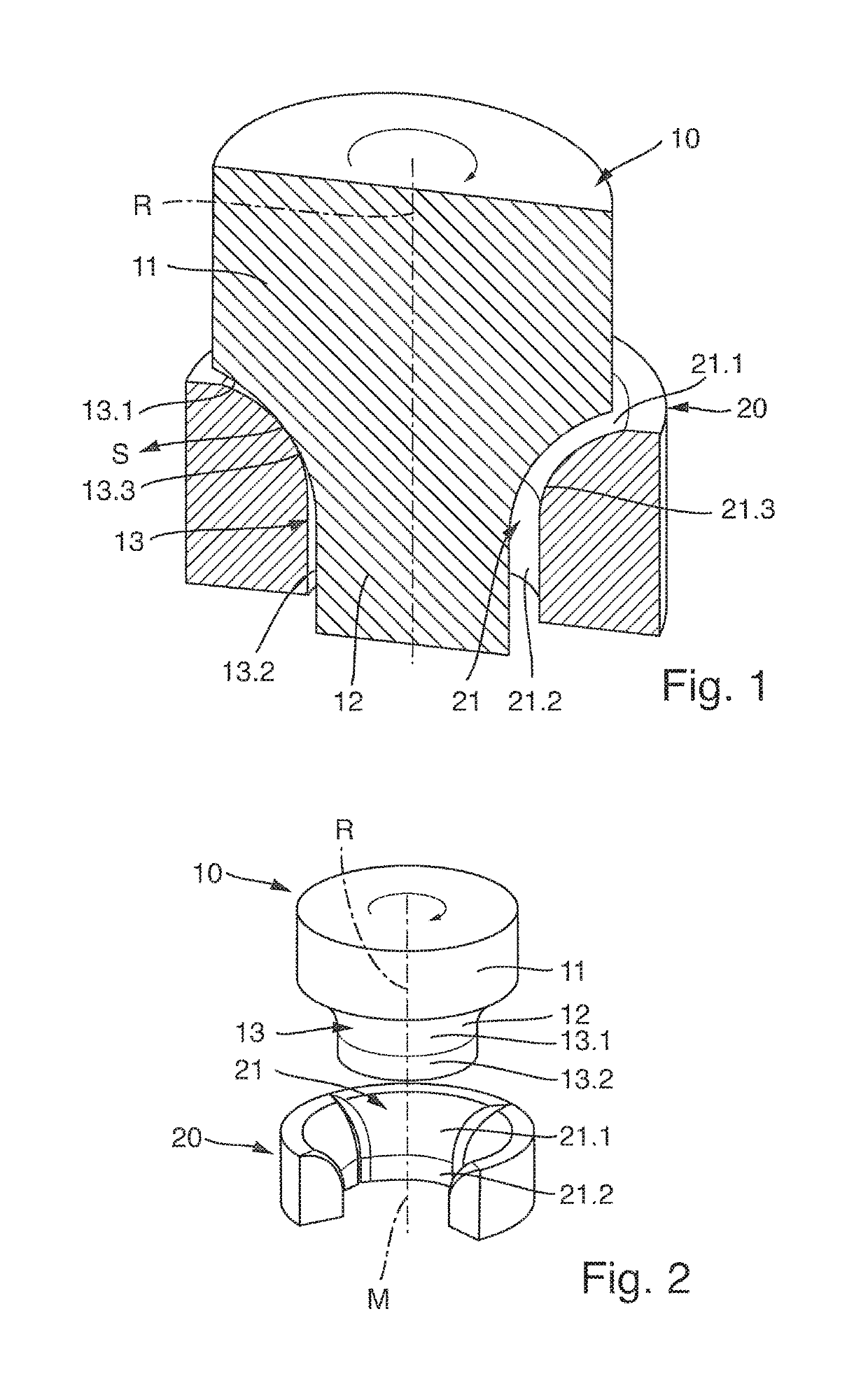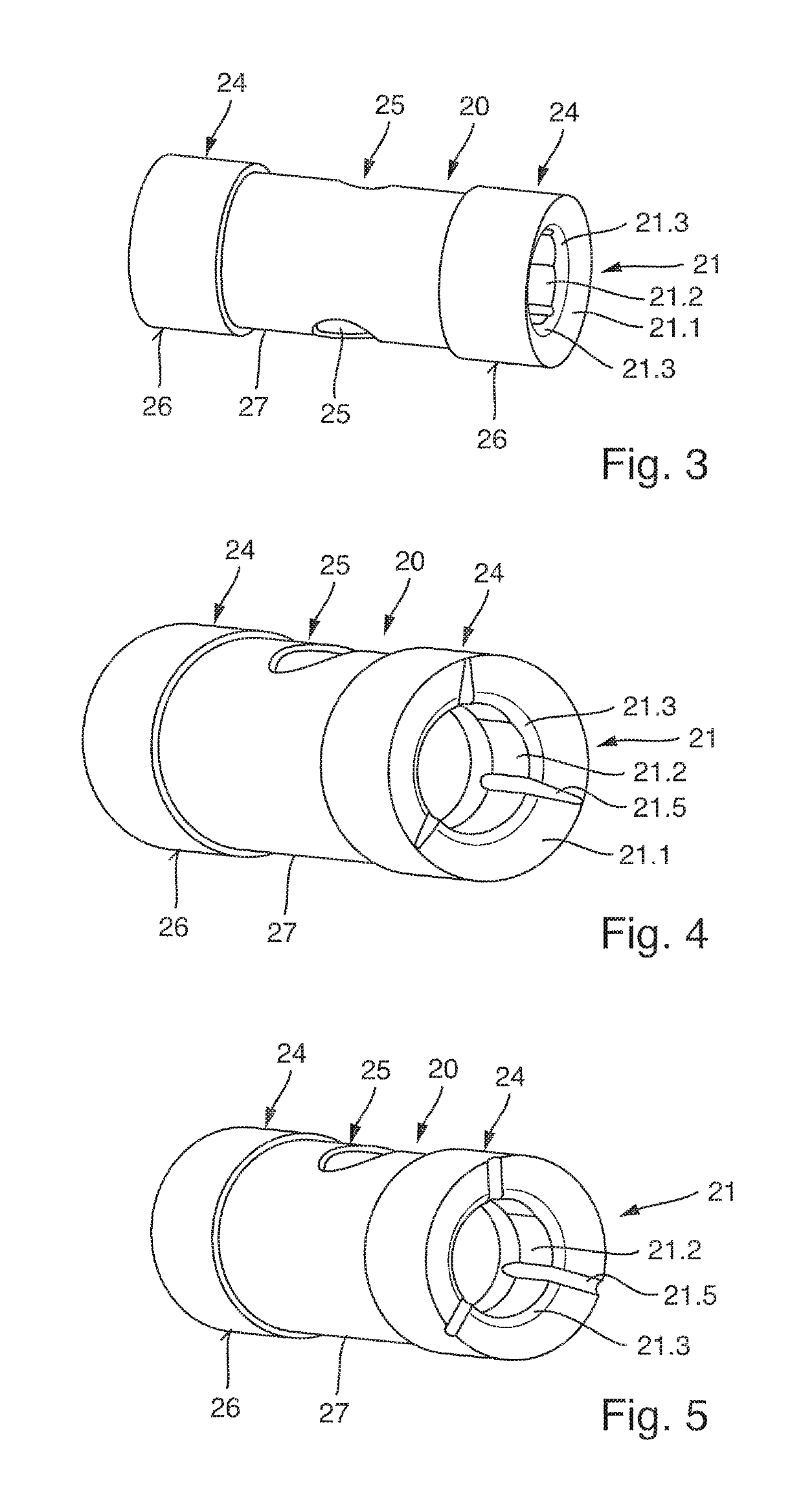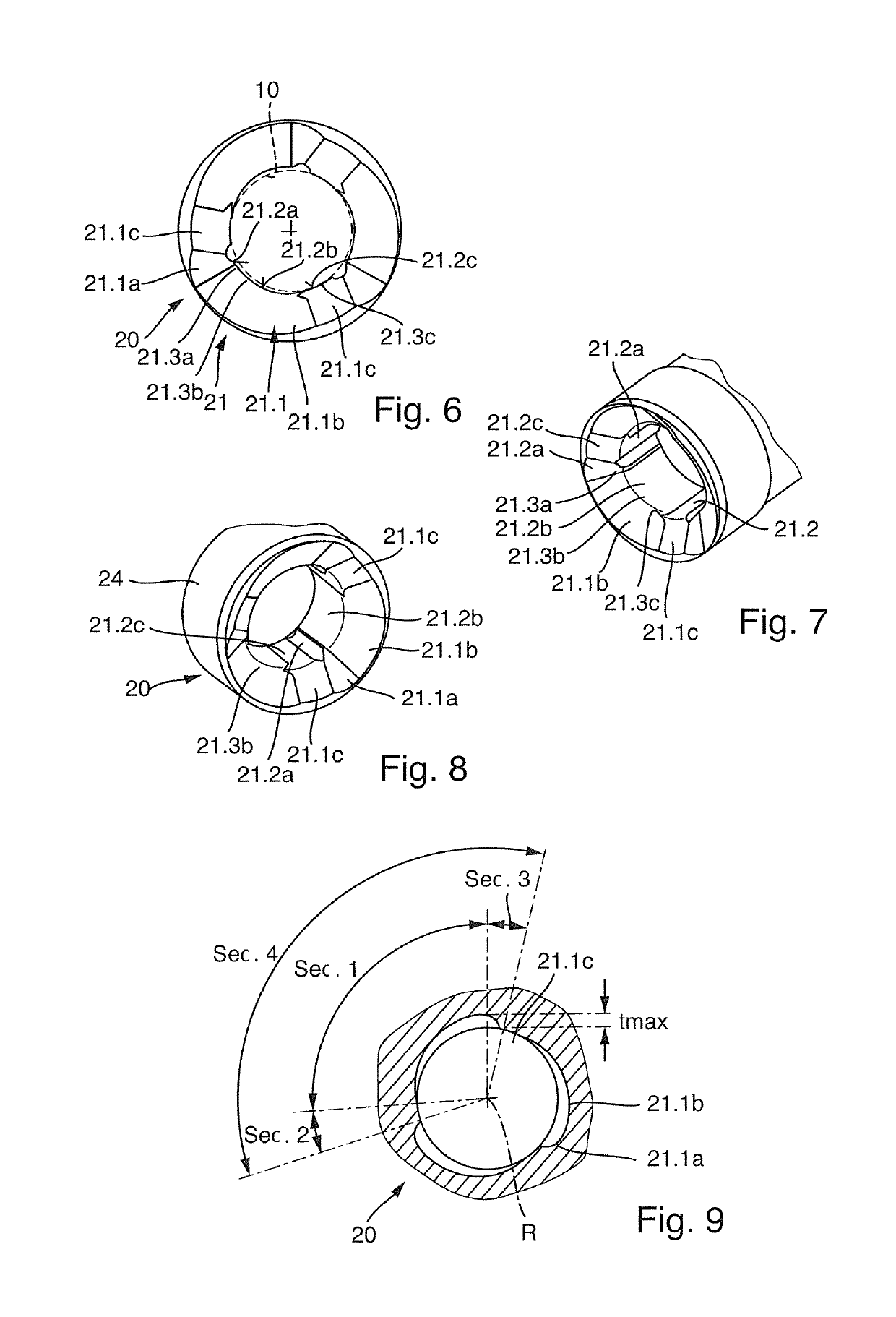Hydrodynamic plain bearing and exhaust-gas-driven turbocharger
a technology of exhaust gas and turbocharger, which is applied in the direction of sliding contact bearings, mechanical equipment, machines/engines, etc., can solve the problems of high design and production costs, and cannot be designed, however, for continuous high sliding speeds, and achieve the effect of reducing frictional energy in the contour segmen
- Summary
- Abstract
- Description
- Claims
- Application Information
AI Technical Summary
Benefits of technology
Problems solved by technology
Method used
Image
Examples
Embodiment Construction
[0037]FIG. 1 and FIG. 2 show a hydrodynamic plain bearing having a rotor 10 and a stator 20, a sectioned depiction along rotor axis R of rotor 10 being selected. Rotor 10 possesses an attachment piece 11 adjoining which is a bearing segment 12. A machine component, for example a gear or the like, can be indirectly or directly coupled onto attachment piece 11. Bearing segment 12 possesses an, in particular, rotationally symmetrical rotor bearing surface 13. Rotor bearing surface 13 constitutes a continuous bearing contour in the direction of the rotation axis of the plain bearing. This bearing contour is constituted by two contour segments 13.1 and 13.2 and a transition segment 13.3. The distance of the bearing contour from the rotation axis can consequently vary along the rotation axis (longitudinal center axis) in the context of the invention.
[0038]According to the present invention and in particular as shown by the variant embodiment in accordance with FIG. 1, the bearing contour ...
PUM
 Login to View More
Login to View More Abstract
Description
Claims
Application Information
 Login to View More
Login to View More - R&D
- Intellectual Property
- Life Sciences
- Materials
- Tech Scout
- Unparalleled Data Quality
- Higher Quality Content
- 60% Fewer Hallucinations
Browse by: Latest US Patents, China's latest patents, Technical Efficacy Thesaurus, Application Domain, Technology Topic, Popular Technical Reports.
© 2025 PatSnap. All rights reserved.Legal|Privacy policy|Modern Slavery Act Transparency Statement|Sitemap|About US| Contact US: help@patsnap.com



